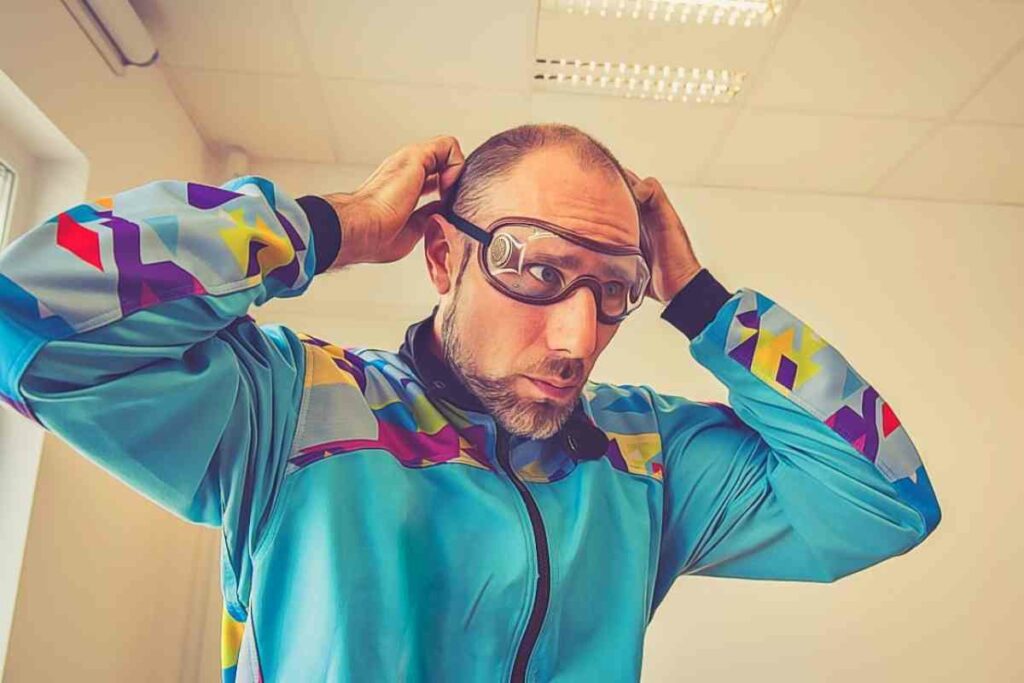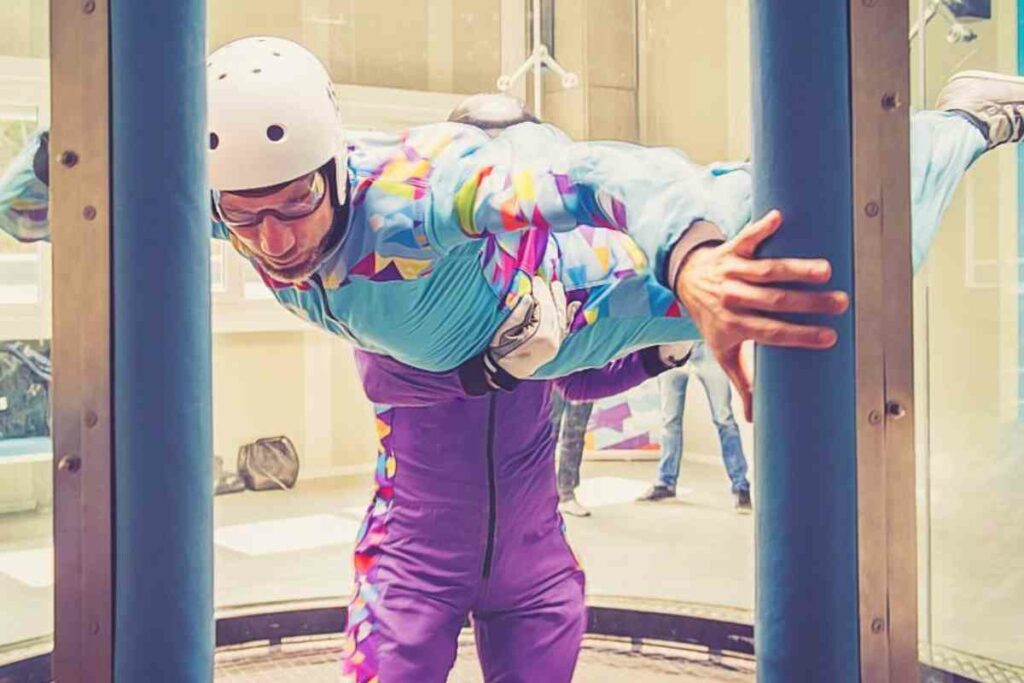Imagine the thrilling feel of the wind rushing through your face and body in free fall. But you are indoors instead of being thousands of feet above the air jumping off a flying plane.
If you seek new experiences, this detailed guide to indoor skydiving is what you need.
What Is Indoor Skydiving?
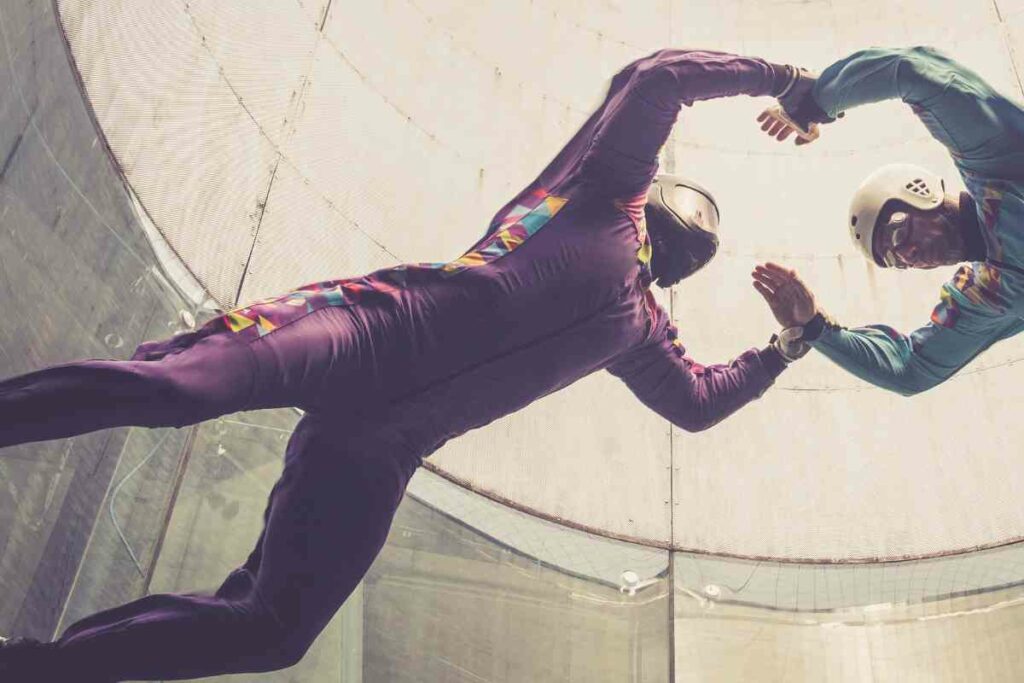
When we hear the term skydiving, we imagine ourselves flying through the air with a parachute strapped behind our backs.
For anyone who fears flying, it sends a sudden chill through the spine, and you wonder, why would I want to do that?
Indoor skydiving is an entirely different activity, albeit with similar rules and sensations.
Read before you go – Can You Indoor Skydive If You Have a Medical Condition?
The weightless feeling of having your body float in the air without traveling to space is terrific.
Unlike in outer space, you can feel the gush of air in your hair as it keeps you afloat in a vertical wind tunnel.
One of the main reasons indoor skydiving attracts people of all ages is because it happens safely inside a building. It feels much safer, and you do not have to worry about sudden weather conditions such as snow, rain, and strong winds.
The History of Indoor Skydiving
Indoor skydiving has been around for decades. However, the first known discovery was in 1964 by a NASA scientist.
He was part of an Ohio team working on the Apollo Space Programme, which built a vertical wind tunnel for human flight experiments.
Since then, numerous wind tunnels have been built for the pleasure of indoor skydiving worldwide.
A father, John St Germain, made the first one in the late 70s for his children as he felt it was safer than freefalling from a plane.
Today, the various tunnels available are primarily for skydivers and people interested in experiencing body flight.
Besides being a recreation facility for the young and those afraid to jump off planes, it acts as a training ground.
Indoor skydiving is now a popular sport that requires hours of training to be the best.
Outdoor skydivers also use it to prepare for an airplane-free fall of over 14,000 feet in the air.
Whether you are an expert or a noob, the opportunity to skydive indoors is an incredible experience.
Quick Facts About Indoor Skydiving
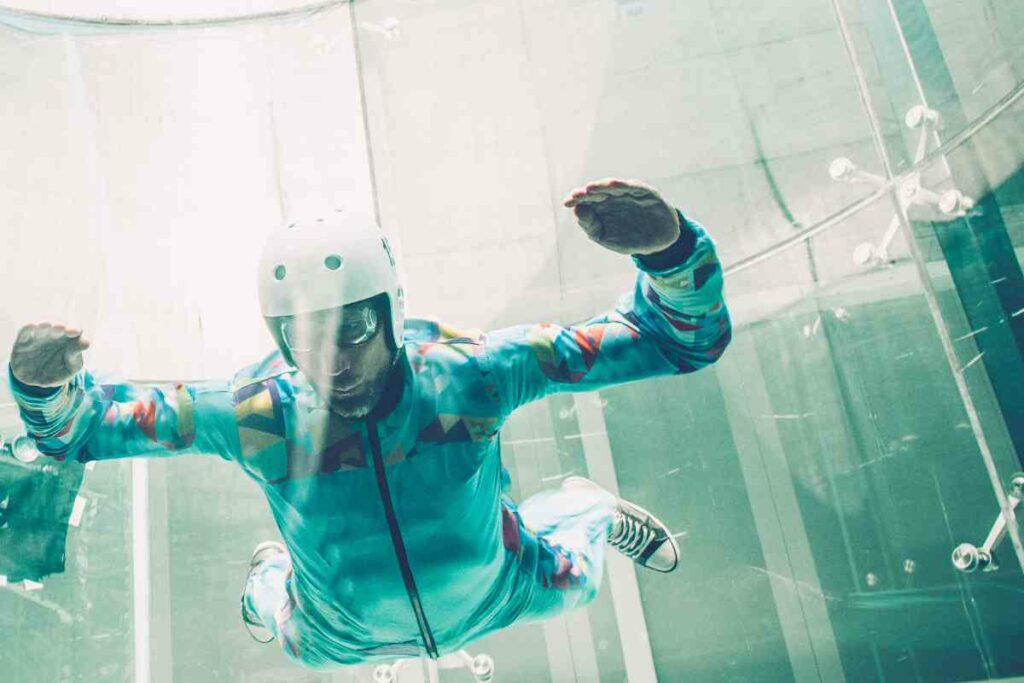
Besides being a fun activity with friends, family, or colleagues, here are a few things to know about indoor skydiving.
- Indoor skydiving is an actual sport.
- Training for competitions is intensive as the judges score competitors based on technique and style.
- You will tire from the wind and the effort to keep your body in the proper flying position.
- As long as you pass all fitness checks and are in good health, anyone above two years can skydive indoors.
- During your first experience, you may struggle to fly effectively but can quickly learn.
What Makes Indoor Skydiving Possible?
Indoor skydiving happens in vertical wind tunnels where the strong wind’s force keeps one floating for extended periods.
Unlike outdoor skydiving, one can stay weightless longer as you are not falling due to gravitational pull.
Additionally, the wind speed is easily adjusted to prevent gravity from pulling you down.
Every indoor skydiving chamber consists of several massive vertical wind tunnels pushing vast air gusts upwards.
Large ceiling fans then push the wind downwards through an outer layer of the tunnel into the floor of the flight chamber.
The constant flow of wind up and down is what keeps one floating.
Keep In Mind – Since every person weighs differently, the operators constantly adjust the wind speeds to accommodate you.
All indoor skydiving chambers have inbuilt safety nets to offer protection from the equipment above and below.
On average, a chamber will have wind speeds of up to 180 mph in the over 12 feet long enclosure.
Preparing For An Indoor Skydiving Experience
The beauty of indoor skydiving is that anyone below 18 can participate, unlike outdoor skydiving.
Since it is also safer for everyone as the environment is controlled, only trained professionals can help first-time flyers.
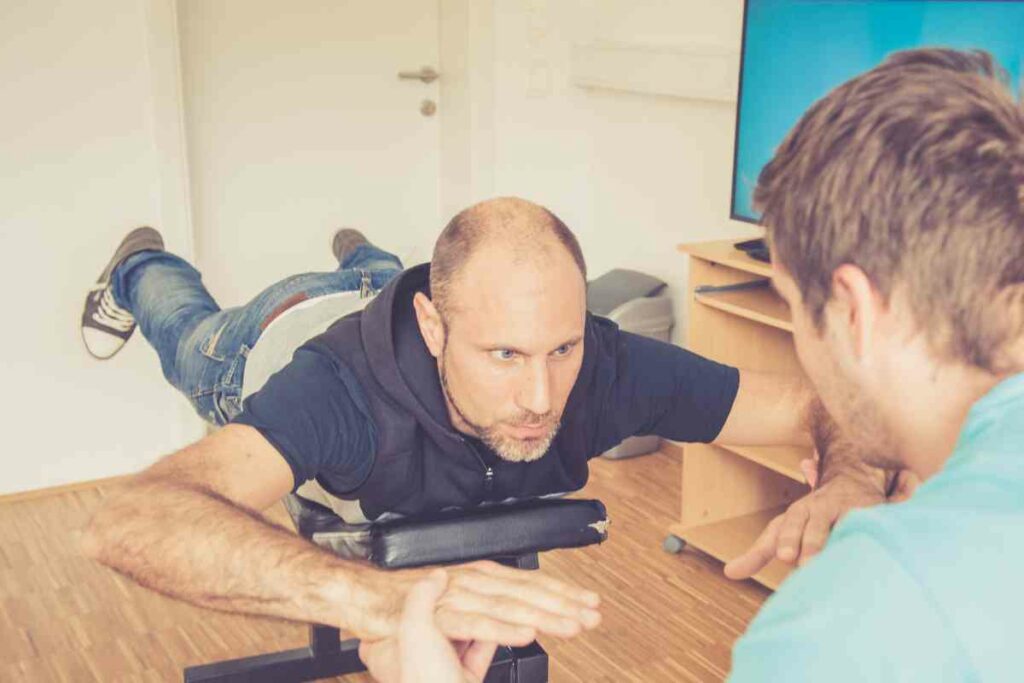
Below is a detailed process of what to expect when you visit an indoor skydiving facility.
On Arrival
Once you have identified your location, with prior inquiry and booking, show up at least an hour before your allocated slot.
All establishments will ask you to sign a release form or liability waiver as a safety precaution.
At this point, the instructor will note down your age, weight, and any medical or physical challenges you may have.
You will be approved for the next step if you have a doctor’s permit for those with physical disabilities who are not at risk of injury.
You will then move into a separate room for pre-flight briefing, which includes safety instructions and training.
The indoor flight instructor will tell you what to expect inside the chamber. They will explain all the sensations you may experience, and you can ask questions.
What to Expect? You will also get a quick guide of hand signals while flying, as the heavy wind in the chamber hinders conversation. Take note of these hand signals, which will help you maneuver properly.
The indoor skydiving instructors will show you how and when to lift your arms or legs and relax for the air to keep you up.
Besides, they will also demonstrate the appropriate body posture for you to fly effectively. Once the physical briefing is over, you will head to the gear room.
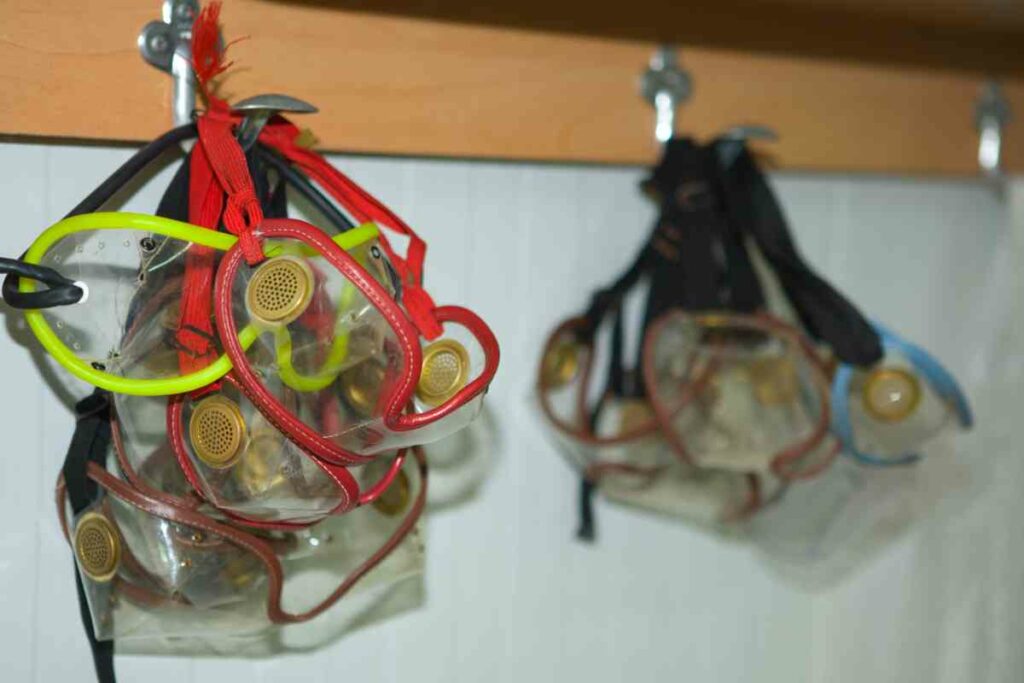
The standard in-flight suit is safe to use, especially at the high wind speeds in the chamber.
It has handles on the shoulders and feet for instructors to grab, and they also use them to keep you steady.
Apart from the safety suit, you will get ear plugs, goggles, and a helmet to protect your head, eyes, and ears.
Ear protection is necessary because the wind tunnel can get loud, averaging 120 decibels, enough to cause permanent damage if unprotected.
The Actual flight experience
When it is your turn, an instructor will show you through the chamber entrance.
Here, you must have your arms over your head, fingers stretched out, and elbows slightly bent.
The indoor flight instructor will then signal you to come forward so they can grab ahold of you. They will then gently help you lay forward in the best flat position so the airflow stabilizes your body.
As a first-timer, your flight time may be less than 2 minutes long. Stay calm; on average, an outdoor skydiver takes approximately 1 minute to reach the ground from thousands of feet above the air.
Typically, indoor skydiving offers a longer experience, but it may take several visits to fly longer unguided.
For now, enjoy the feeling of your body suspended in mid-air.
Surprisingly, you may think it was more than 3 minutes as time seems to stop for a few seconds.
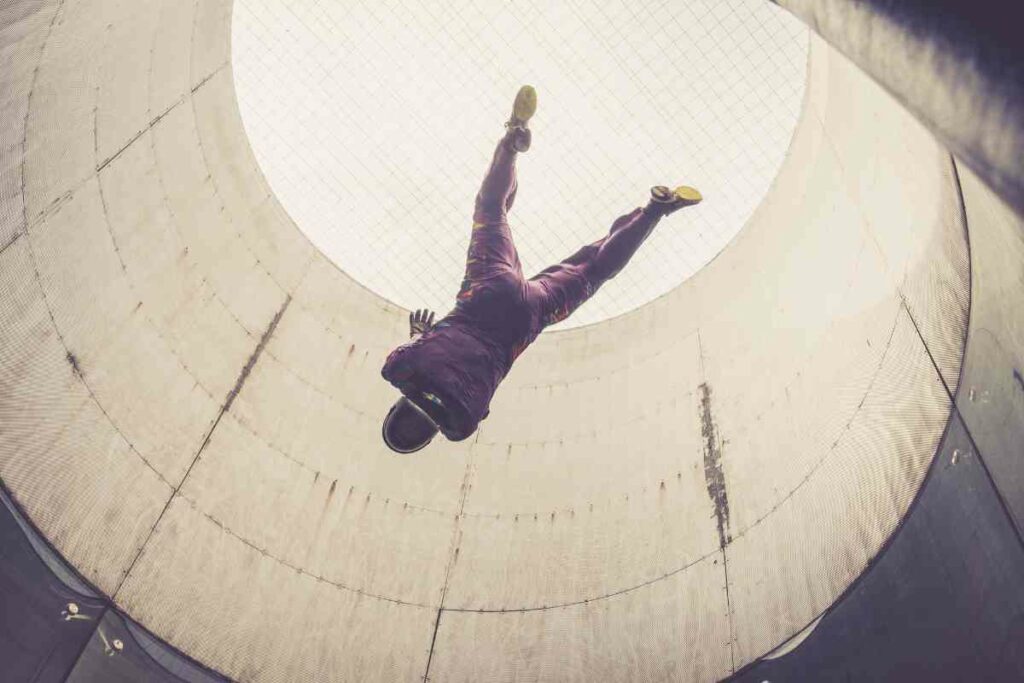
If you want to go again, the instructor will help you exit the chamber and wait your turn.
The second round is more manageable, as you know what to expect, and the instructor helps you fly better.
Most establishments recommend a two-flight package for beginners, as the first round tends to be a blur.
However, once you get the hang of flying, your next session will be fun as you can control your body movements.
For the adrenaline rush seekers, you can request your instructor to help you have a full-body spin or rotation high above the net.
Spectators are also allowed at this stage. Go with family or a friend who isn’t participating. They can watch you from the outside as the chamber is usually glass.
Additionally, they can take photographs and videos from the observation area. Alternatively, you can pay extra to have your experience captured inside the chamber by the establishment.
After the Flight
Congratulations on your first indoor skydiving experience. It must have been exciting.
Now the instructors will help you recover by asking quick questions about how you feel while you remove the safety gear.
At this point, you can choose another session if slots are available. If not, rest up for a few minutes and check the photos and videos to remember the experience.
Your session may even encourage a friend from the spectators.
One may experience dizziness after indoor skydiving due to excitement and nervousness.
Although this is uncommon, it can be due to dehydration, so eat a light meal and drink a little water before your session. If you experience motion sickness, take shallow breaths to try and calm yourself down
Restrictions of Indoor Skydiving
Although indoor skydiving is one of those activities everyone can participate in, it has its restrictions.
Whether you have a physical disability or are visually impaired, you can participate in an indoor skydiving session.
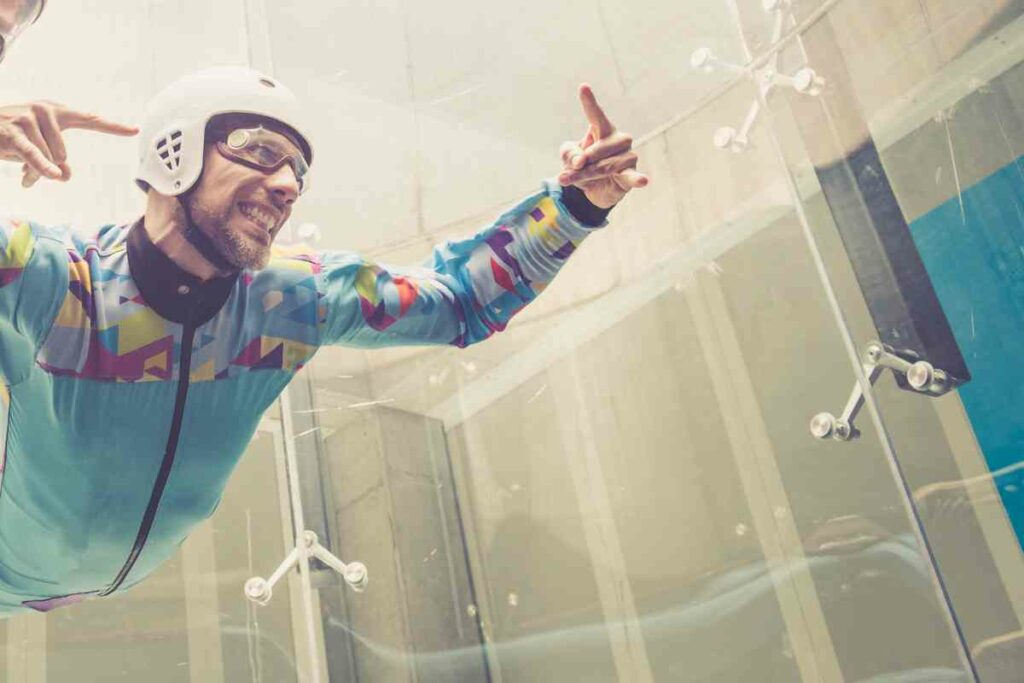
Exceptional instructors are readily available to offer any custom services to suit their clientele’s needs.
Some of the significant rules involving indoor skydiving are:
- One must be at least 3 years of age to participate in indoor skydiving.
- However, the minimum age varies from establishment to establishment.
- Every participant must sign a liability waiver, and those below 18 years should have adult supervision and authorization in writing.
- Although the wind tunnels adjust the wind to accommodate different weight categories, there is a weight limit to participate.
- The maximum weight allowed is above 260 lbs.
- Unfortunately, you will not be allowed to skydive indoors if you have a medical condition and the doctor has not cleared you.
- Anyone with high blood pressure, heart conditions, and spinal or neck challenges will not be allowed to participate.
- If you recently broke a limb or have a joint dislocation, you cannot fly. The wind speeds are pretty high and can easily affect such injuries. As a precaution, speak to the instructor if you also had a recent recovery.
- Women in early or late pregnancy cannot fly in the wind tunnel. The risks of injury are high for the unborn baby and the mother.
- If you are intoxicated, you will not participate in indoor skydiving. One has to be fully aware of the surroundings and listen keenly to the instructors.
- As an extra precaution to prevent dehydration which can cause dizziness after a session, skip alcohol the night before.
- Only professional indoor competitors and outdoor skydivers can enter the chamber in groups to practice their acrobatics.
- As a beginner, you can only access the room alone and with an instructor. Later, after several visits and experiences, you can fly alone, with a partner, or in small groups.
Alternatives To Indoor Skydiving
Besides being a fun recreational activity, indoor skydiving is now an international sporting event.
Championships happen in various locations, with participants training for years to perfect their skills.
Besides competitors, professional outdoor skydivers practice most of their flips and tricks in these chambers.
Once on a plane, they can use the same body postures and angles when they jump.
Also Read ?
There are other ways one can try indoor skydiving.
The most common alternative include the following.
Virtual Reality
In addition to your physical experience, an establishment will use VR headsets to simulate an outdoor airplane free fall.
It gives one the adrenaline rush of being outdoors, yet you are in a wind tunnel.
Indoor Wing Suit Flying
Other establishments use a variation of indoor skydiving called indoor wing suit flying.
Unlike indoor skydiving, wing suit tunnels are horizontal, with the wind blowing diagonally from the left and right.
The gear is also different, as the safety suit looks like it has wings.
Outdoor Skydiving
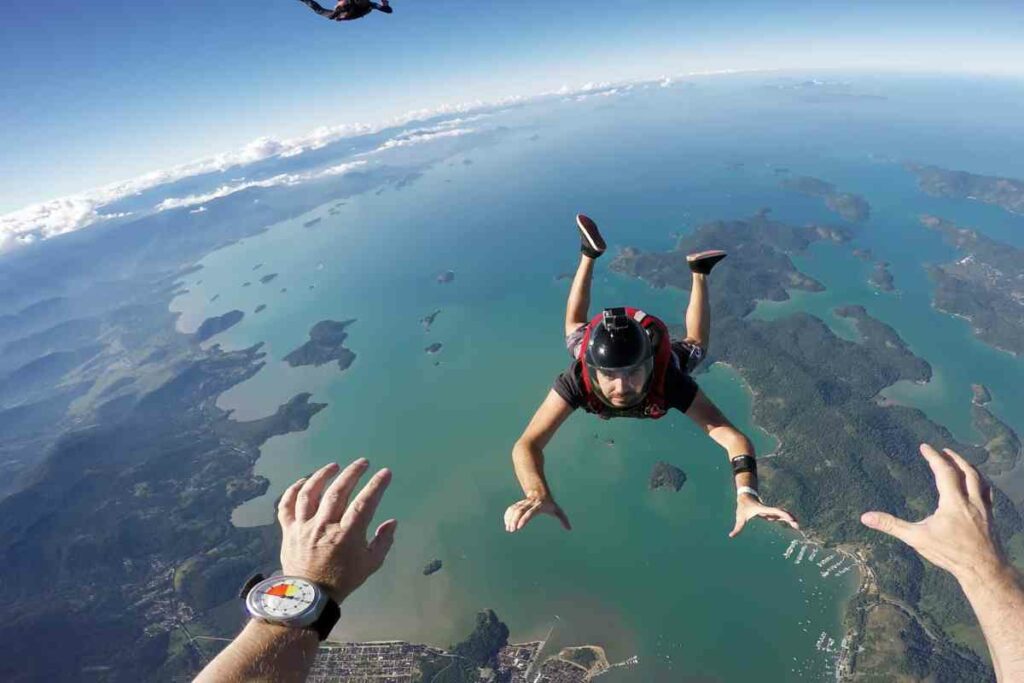
You can try outdoor skydiving if you are not afraid of heights or planes. However, it is a more expensive and exclusive experience.
If it is your go-to, you will love the sweeping views and the incredible rush one gets.
Locations Worldwide For Indoor Skydiving
There are hundreds of indoor skydiving establishments worldwide.
You will find them in several cities in:
- Asia
- Oceania
- Europe
- North and South America
- Australia
In the US alone, there are numerous locations in almost every major state.
The largest wind tunnel in Abu Dhabi UAE measures 104 feet long and is wide enough to fit a large group of fliers.
Setting up an indoor skydiving facility is expensive, and although some regions do not have one, outdoor skydiving is popular.
Countries without indoor skydiving facilities have private outdoor skydiving firms which offer personalized services.
However, the two have significant differences, mainly using a parachute, freefalling off a plane, and extensive land views.
Conclusion
Indoor skydiving is one of the best flying experiences where almost everyone can safely participate. Once you taste the adventure and fun, you may want to do it repeatedly.
Always listen to the instructors and speak up if you are concerned. In no time, you will be an expert indoor skydiver.



